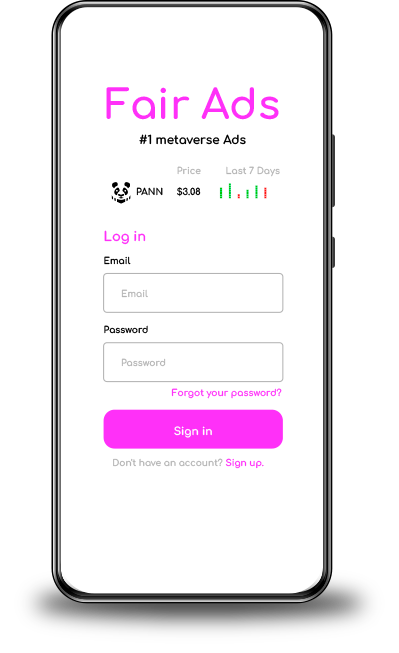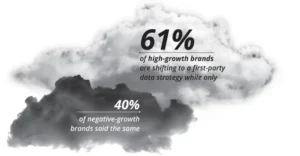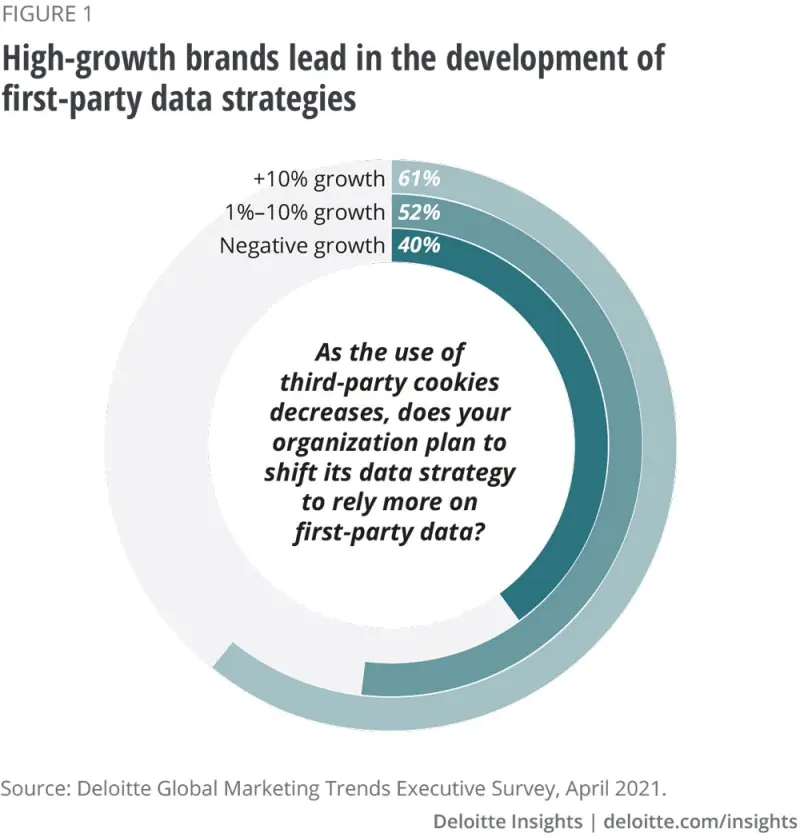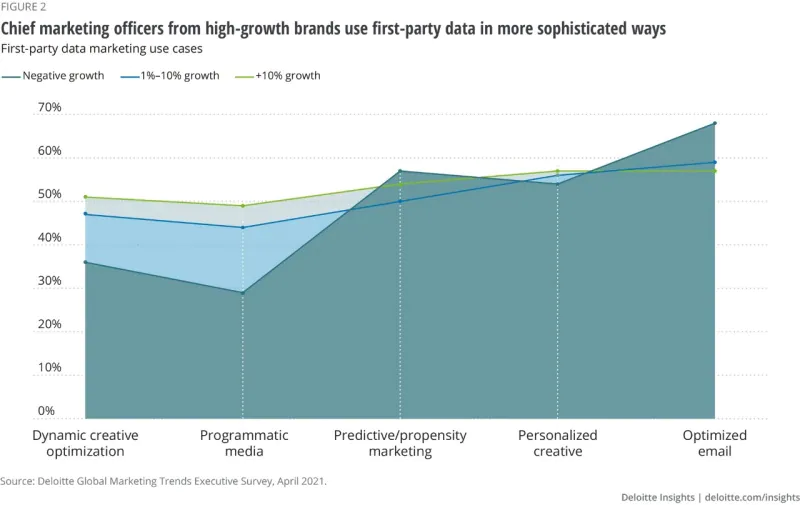
The Fair way to do marketing
Advertising in the Web3 Era
The Fair way
to do marketing
in the “Privacy Age”.

Meeting customers in a cookieless world
How growth leaders are rethinking first-party data strategies
With third-party cookies systematically disappearing, how can marketing organizations use other data strategies to effectively target and engage with their customers?
Over the past decade, marketers have been experimenting in the digital world to strengthen brand-customer relationships. For example, a proliferation of social channels has altered how marketers interact with their customers in both the business-to-consumer and business-to-business spaces.1 In tandem, advances in big data and artificial intelligence (AI) have allowed marketers to better target and message customers—and as importantly, measure the effectiveness of those approaches. Fundamental to these advances are third-party cookies (data captured and used from third-party sites).
 Now the pendulum is swinging the other direction, toward data privacy: While consumers may appreciate relevant ads, they also have concerns about how their personal information, purchase preferences, and browsing habits are being used (see our trend “Designing a human-first data experience” to learn more). In response, regulations have tightened, and many web browsers and tech companies are disabling third-party cookies—with additional changes and restrictions anticipated down the line.
Now the pendulum is swinging the other direction, toward data privacy: While consumers may appreciate relevant ads, they also have concerns about how their personal information, purchase preferences, and browsing habits are being used (see our trend “Designing a human-first data experience” to learn more). In response, regulations have tightened, and many web browsers and tech companies are disabling third-party cookies—with additional changes and restrictions anticipated down the line.
The phasing out of third-party cookies can hinder marketers’ ability to effectively engage with customers in myriad ways, including finding quality prospects, re-engaging customers who have considered a brand’s products but possibly moved away (“plugging the leaky funnel”), and measuring the effectiveness of digital ad campaigns.
As marketing organizations try to keep up with these changes in sentiment and regulation while continuing to deliver relevant campaigns to consumers, pivoting toward using first-party data in combination with digitalization could help them continue their strategic initiatives.
In an effort to help marketers rethink their own data strategies, we look at insights from our survey of more than 1,000 global executives to explore how high-growth brands (defined by those with at least 10% growth over the past year) are both getting ahead of this ever-evolving data landscape and deploying first-party use cases more strategically than their lower-growth peers.
First to the first-party data party
Significantly, high-growth brands are taking the lead in the shift to a first-party data environment. In fact, results from our executive survey reveal that 61% of high-growth companies are shifting to a first-party data strategy, while only 40% of negative-growth companies say the same (figure 1). This may signal that high-growth organizations more often recognize the pressing need to get ahead of a rapidly changing environment.

And getting ahead of this changing landscape is exactly what VMware, a global business-to-business technology company is doing. Chief marketing officer (CMO) Carol Carpenter highlights how VMware is taking a “more globally consistent approach that is above and beyond the rules and regulations” to give customers more agency with their data.3 Not only can this provide greater consistency across regions, it also helps prepare VMware for a cookieless world.
CMOs from high-growth brands are also well ahead of negative-growth brands in deploying first-party data in more sophisticated ways, specifically in two key areas: delivering personalized content via dynamic creative optimization (51% vs. 36%), and using data to serve ads to users via programmatic media (49% vs. 29%). Alternatively, negative-growth brands are more focused on using first-party data in more traditional ways such as optimized email (68%) and predictive/propensity marketing (57%)—though, not significantly more than the rest of the field (figure 2).

Follow the (growth) leaders
Going down this path of reimagined data usage can come with its share of evolving challenges. However, whether your brand is just getting started or preparing to deploy first-party data in more sophisticated ways, every organization needs to start somewhere.
Push the data reset button
As we observed with many negative-growth brands, optimizing emails is a natural starting point because it’s often fueled directly by first-party data. However, designing a more encompassing and longer-term first-party strategy typically requires a more holistic view of your data infrastructure—and, in many cases, a complete rethinking of both the technical and operational environments.
For organizations overhauling their customer data approach, this could mean:
- Determining your reliance on third-party cookies. It’s important to develop a clear picture of how you’re reaching and messaging customers in the digital sphere and assessing how many of your customer interactions rely upon third-party cookies. One option is to deploy a “cookie calculator” to gain visibility into where the organization relies most on third-party cookies.
- Creating new data infrastructure. To accommodate your first-party data collection, it’s imperative to establish sufficient infrastructure, such as a comprehensive consumer data platform (CDP), that can help connect various data sources throughout the customer journey.
A clear understanding of these risks, opportunities, and priorities can help lay a foundation to build upon—which is when the fun of experimentation can begin.
Try and try again
Although it appears to be a challenge, the dissolution of third-party cookies also offers an opportunity for companies and brands to experiment with developing relationships with key customers. As we observed with high-growth brands, some companies are experimenting a lot, whether on dynamic creative optimization, programmatic media, or propensity marketing. With this in mind, marketers should consider three key actions to help ensure success when implementing a first-party data strategy:
- Cultivate unique first-party data through greater consumer value. Marketers who focus on developing first-party data for their brands can create more opportunities to reach those customers by cultivating unique data insights and long-term measurement. One way to do this is by offering value in exchange for data. “Creating an ecosystem of services in which the richness of the customer experience improves as more complete data profiles are built or allowed by the customer may be an approach to address the issue,” says Mack Turner, former research executive at Bank of America.4 This can be achieved through customer-value initiatives such as loyalty programs, AI web assistants, or gamification.
- Build deeper relationships with ecosystem partners. To grow their first-party data, marketers may need to look outside their walls. Tech giants and media publishers have enormous amounts of their own first-party data; so, to bolster data development internally, marketers should look to strengthen relationships with such partners to gain access to their walled gardens of data and corresponding insights.
- Rethink your analytics. Without third-party cookies, prospecting and retargeting will most likely become less individualized. However, to establish, maintain, and deepen customer relationships, companies should reimagine how they use analytics and targeting. For example, technology and platform companies are already proposing to shift the focus from individuals to cohorts—groups of people with similar interests, such as soccer fans or knitters—which aims to give marketers a way to target ads to groups without requiring details of individual users.
While marketers prioritize and experiment, the process of determining success will most likely take a multichannel measurement approach that blends insights from a CDP, cohort analytics, and deeper relationships with ecosystem partners.
There will likely be more speed bumps in the road, but, ultimately, a shift to first-party data can lead companies toward a better understanding of their customer journey. So, continue experimenting, measuring, and improving—and buckle up!
source: www.deloitte.com